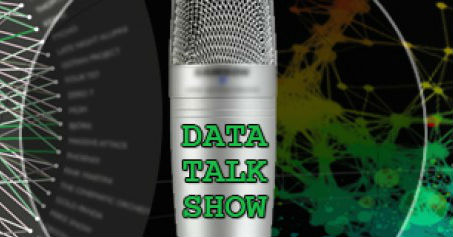
by Stephanie Rabinowotz | Feb 26, 2016 | Big Data
Colleges are constantly competing to acquire more student than their rival schools. In today’s world how do colleges do this? Colleges obviously select their classes based off of the most accomplished students, but how do they gain the interests of these students in the first place? Big Data has become an extremely useful tool in the college recruiting process.
Colleges rely on big data not only in recruiting athletes for scholarships to better their sports teams and in return receive more publicity and popularity, but also in finding responsible young adults with the best potential to succeed. There have been reports about colleges stalking the social media sites of prospective students to determine which students are most likely to make it to graduation and which students are predicted to drop out.
Online schools most commonly use big data in recruiting as they rely on knowing who to reach out to over the internet. Considering online colleges are best for people who have easy access to a computer and to the internet, they target people who may be searching for “online masters degrees” or “programs with flexible schedules”. Once the college has determined who these people are, schools infiltrate these people’s daily lives by popping up in advertisements during their Pandora profile or on the borders of their social media profiles.
Big data is heavily utilized in the recruiting of prospective students and is becoming a main tool in determining acceptance. To learn more about how big data is being used in the recruiting world check out this interesting article about how big data is becoming the best resource for HR departments.

by Stephanie Rabinowotz | Feb 24, 2016 | Big Data, Business Optimization
Big Data is created from numerous devices, around the clock, every day. Big Data comes from watches, smart phones, televisions, computers, cars, social media sites, and even home appliances. Every where we turn there are devices creating data and sending it to the cloud to be stored.
Once this data is in the cloud it is stored there until a company decides to dig in and start doing some analysis. This reservoir of information is an extremely useful tool for organizations big and small. The issue is that with all of this separation between where data is created and where it ends, we begin to forget that Big Data is coming from humans. Real people, all with different lifestyles and beliefs are the ones producing this information every second of the day.
It is important for companies to remember that when they are working with Big Data, they are handling real people’s information. Crunching codes may just look like a lot of numbers and symbols, but each one of those characters represents a specific person. This is why there are so many discussions about security surrounding Big Data. Companies much remember that they are dealing with personal information that may cause harmful repercussions if released or used in the wrong way. A prime example is when Target alerted a young girl’s father that she was pregnant before the daughter got the chance to.
Although Big Data is a great way to gain information on large masses of people, we must always remember to put the people first.

by Stephanie Rabinowotz | Feb 22, 2016 | Big Data, Business Optimization
Big Data analyitics is intended to be used for the purpose of making connections and discovering insights that humans may miss or take longer to uncover. With the recent announcement that companies have been using Big Data to gain information on their own employees, it may be time to question the lack of limitations surrounding Big Data. Is it okay to use Big Data to spy on people ?
Big Data is used to study the behaviors of millions of consumers everyday so what makes this incident any different? When companies look at consumer behavior, it is done with the motive of ensuring customer satisfaction and retention by knowing what individualized customers want. The issue is that when companies use Big Data to spy on the behaviors of their employees, they are not doing it with the employee’s best interest in mind. Employers are studying their employees’ online activity to determine which individuals may be searching for other jobs, are more likely to develop a serious illness or even those who are planning to start a family.
Instead of encouraging company culture and facilitating open communication with employees, companies are taking the sneaky route to protect themselves from losing workers. It is understandable for companies to be concerned about losing employees and the need to maintain production, but does this give them the right to essentially spy on their own people? It is important to remember that big data is simply a tool and that it is up to the person using it to gain ethical insights, not sneaky ones.

by Aleah Radovich | Feb 17, 2016 | Big Data
There are roughly 7.6 million animals admitted to shelters in the United States each year. The same number are adopted as are euthanized: 2.7 million. So many are euthanized due to limited resources; many animals are coming in, but there is simply not enough space and not enough money to care for them.
As a “mother” of a rescue dog, this issue is very near and dear to my heart. So, I decided to look into it. With my knowledge in Big Data, I thought that surly there is a way to address this concern.
What I found was that the ASPCA is now utilizing big data and a geographic information system (GIS) to approach this problem in a whole new way. They are using this data to determine 1) where these animals are coming from, 2) how they can best utilize their resources to care for more animals and 3) how to get more animals adopted into happy homes.
1. “Hotspots”
The ASPCA refers to areas where it is highly likely to find abandoned or unwanted pets, “hotspots.” They do their best to predict where these hotspots are, and allot more resources to these locations. This includes trucks, people, shelters, veterinary services etc. But what they have found since using the GIS system, is that many times in the past, their predictions were wrong.
Once they identify a hotspot, they know where to pour prevention resources into. Many times, owners just give up on a pet, because owning the animal is too difficult or expensive. They can provide owners with less expensive services like neutering or minor medical interventions, such as vaccines. This makes it more likely that the owner is able to care for the pet, and makes it less likely that animals will procreate uncontrollably.
2. Efficiencies
The previous section touched on this, in that many resources were previously wasted through inaccurate hotspot identification. Using data, they are better able to distribute their limited resources efficiently.
Ultimately shelters, rescues and the ASPCA are all businesses that must consider their profits and costs. Big Data can help these shelters in similar ways that we have discussed in our blog. Data could help them determine if they are spending too much on needles, or if they are paying to replace their tires when there is still a warranty. It can even help them best utilize their space. If they can reduce these costs, then they will have more money to spend on services that directly affect the dogs and cats.
3. Adoption
These days, when we are interested in adopting a dog or cat, our first stop is often times the web. We may search certain breeds we are interested in, or “how expensive is it to own a dog?” or, searching good dog breeds to take hiking. These searches can be used to identify concerns that potential adopters have, and what type of animal is more likely to be adopted in a certain area.
For example, Colorado is known as a very active state. Therefore, it may be more likely that a German Shepherd would be adopted in Colorado, than in New York City. Shelters can use this information to relocate animals to areas where they are more likely to be adopted.

by Stephanie Rabinowotz | Feb 11, 2016 | Big Data
Ever wonder where the public’s privacy goes when it comes to Big Data? Does it just get thrown out the window to benefit big corporations? Today it seems like the internet knows so much about us it is almost like they are watching us. That is because they essentially are. Big Data tracks our every move online and sends back reports on our behaviors to companies so that they can better advertise to us.
So how does this come into play with social media? Facebook being a big one, it would be interesting to see how Big Data fits in with one of the biggest social media sites we have ever known.
Check out this informative podcast on Big Data privacy and Facebook!
Marc Schtul On Big Data, Privacy And Facebook!

by Stephanie Rabinowotz | Feb 8, 2016 | Big Data
They finally did it ladies and gentlemen, the Broncos have won the super bowl! If we look deeper into the Broncos and the super bowl we can see that Big Data is all around. One of the less obvious ways Big Data is utilized in football is viewing footage.The best teams are the ones who study themselves and their opponents. There is lots of Big Data that goes into relaying footage to a tablet to be viewed by the played on the sidelines.
Speaking of Big Data promoting the ability to view a play, that is how us fans at home watch each game! All of the lines we see on the field and the replays that show different play patterns are all produced through the quick analysis of big data from multiple different cameras and angles. At one point in yesterday’s game there was a 360 shot of a paused play to show a birds eye view of every player in that formation.
Besides all of the technical stuff, the super bowl is practically an American holiday which means there are excess amounts of food, liquor and memorabilia. Social media is the platform for people to display their likes and dislikes about everything from the bar they are in to the amazing wings they ordered for their super bowl party. From the data produced through social media, companies can get a quick look at what their consumers think about their products.
To learn how else Big Data is used in professional football, check out this ARTICLE!












Recent Comments